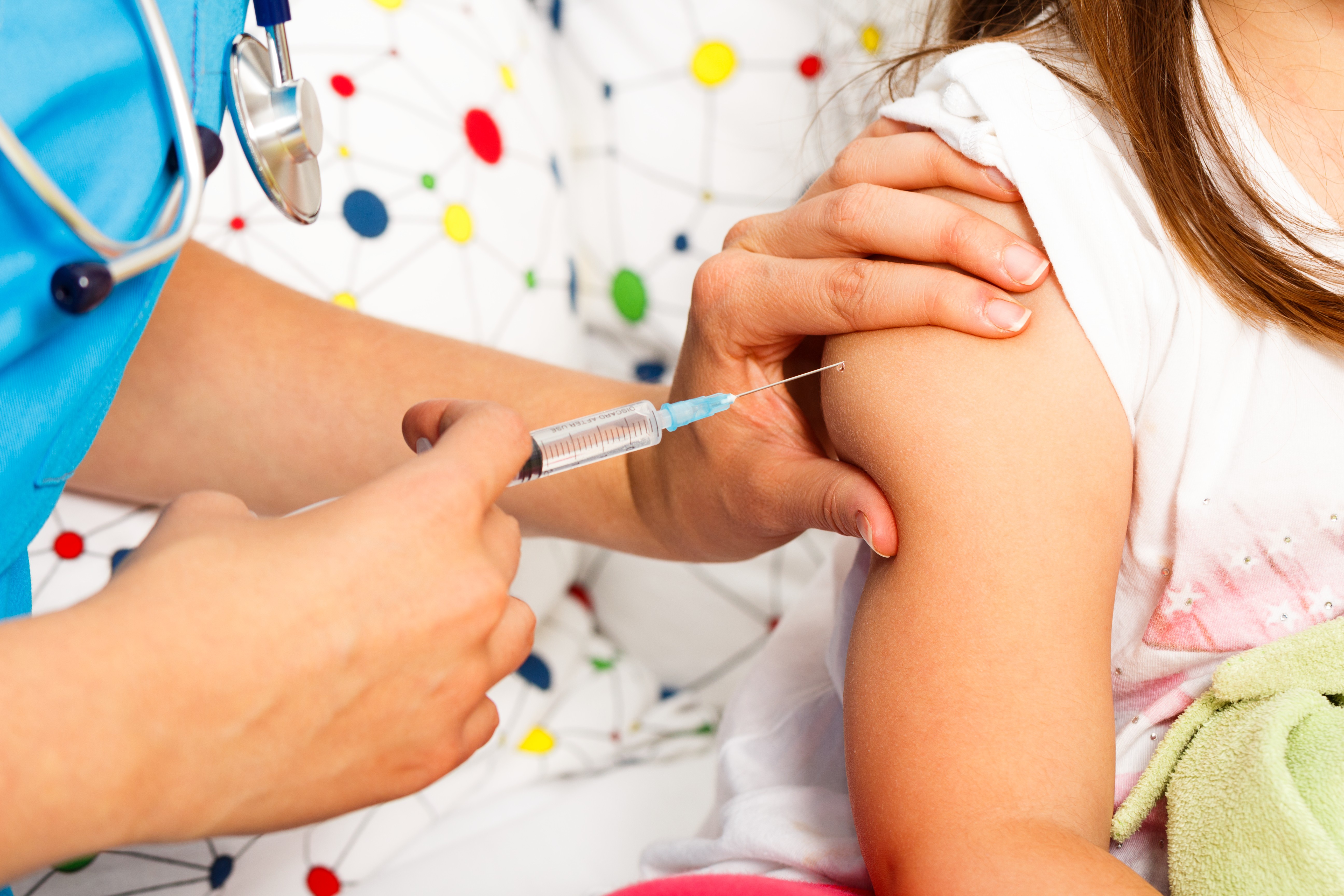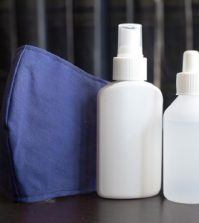- Study Says Most Parents Don’t Use Car Seats In Ride Share Vehicles Like Uber
- This 12-Year-Old Boy Is A Sophomore Aerospace Engineering Major!
- Fire Safety Experts Warn Of Hand Sanitizer Danger After A Mom and Kids Escape House Fire
- Recall Alert: Peaches May Be The Cause Of Salmonella Outbreak, 68 People Ill
- Summer Vacation In The Days Of COVID: Tips To Stay Safe
- How To Safely Grocery Shop During The Coronavirus Pandemic
- Michigan Teen With Vape-Related Illness Undergoes Double Lung Transplant
- Teen Kicks Off Anti-Vaping Campaign From Hospital Bed
- Teenager Receives Life Sentence For Strangling Sister To Death Over A Wi-Fi Password
- Toddler Falls To Death From 11th Deck of Cruise Ship
Report Says U.S. Teens Increasingly Getting HPV Vaccine


Reports say that more than half of all American teenagers are getting vaccinated against human papillomavirus. The rate is also rising over time, according to a new report from the Centers for Disease Control and Prevention.
Researchers found that sixty percent of adolescents received one or more doses of the HPV vaccine in 2016, an increase of 4 percentage points from 2015. About a decade ago, the figure was less than 30 percent.
“We’re really encouraged to see this finding,” said Shannon Stokley, a co-author of the report and associate director for science at the Immunization Services Division of the C.D.C.
The HPC vaccine protects against strains of HPV which can cause cancers of the cervix, penis, anus and back of the throat.
Close to half of all Americans are infected at any given time, and nearly 32,000 get cancer from the virus every year.
About 90 percent of those cases could be prevented with the vaccine, according to the C.D.C. The agency used to recommend three doses, but new guidelines introduced last year amended that to two doses for adolescents younger than age 15.The new recommendation may make it easier for teenagers to complete the vaccination series. Currently, most get the first dose, but only 43 percent return to the doctor’s office for the rest.
“We hope to see a lot of gains with this change,” Dr. Stokley said. “It’s one fewer doctor’s visit they have to make.`’
In this latest report, the rate of teenagers with two-dose coverage was 6.3 percentage points higher than those with three doses.
C.D.C. researchers have also noted progress in the gender gap.
Since the vaccine’s introduction — in 2006 for girls and in 2011 for boys — vaccination rates have increased gradually for girls and even more rapidly for boys. But disparities still remain.
Coverage is round about 20 percentage points higher among 17-year-old girls than among boys of the same age. That gap narrows for younger teenagerss, likely reflecting gains made in recent years.
The new report also indicates that HPV vaccination coverage was 15 percentage points lower in rural areas than in cities.
The discrepancy could also reflect differences in parental views, or perhaps the lower number of pediatricians in rural areas.
“It’s a new finding, and at this point we really don’t know what’s behind that,” Dr. Stokley said. “We need to better understand what’s going on in rural communities.”
Vaccinations Update: Changes Regarding Hep B Vaccine
The American Academy of Pediatrics (AAP) has released new infant guidelines for hepatitis B vaccinations.
The organization recommends that healthy newborns — medically stable and having a minimum birth weight of 2,000 grams — receive the first dose of the vaccine within the first 24 hours of birth.
Previous recommendations included “permissive language,” which allowed for an option to delay the initial dose until a baby’s first checkup.
The AAP now emphasizes that performing the inoculation shortly after birth maximizes the effectiveness in preventing newborn infection.
Researchers discovered in a 2014 study, that just 72 percent of infants actually received the birth dose of the vaccine — significantly below the target of 85 percent..Current hepatitis B vaccinations have already proved effective, however, there are still roughly 1,000 perinatal cases — meaning the infection is passed from mother to child — of the disease identified in infants annually in the US.
The U.S. Department of Health and Human Services announced a goal of cutting down the number of perinatal transmissions of hepatitis B by 2020.
Hepatitis B is a liver infection which is transmitted through blood and other bodily fluids. It can be passed on through sexual contact, as well as needle-sharing, and it can occur in injection drug users.
The disease is often an acute, short-term illness, but it may become a chronic infection. Chronic hepatitis B may lead to liver damage, failure, cancer, and even death.
Infant immunization is particularly important as, unlike adults, they are more prone to the development of the chronic form of the disease.
According to the Centers for Disease Control and Prevention (CDC), around 90 percent of infected infants develop chronic hepatitis B, compared with just 2.6 percent of adults.
98% of healthy children who complete the full series (3-4 separate shots) of the hepatitis B vaccination achieve complete immunity to the disease.
When the original vaccine was introduced in 1982, it resulted in an immediate 90 percent reduction rate in new infections and now the AAP is pushing for a renewed effort in preventing infant hepatitis B transmission, partially in response to the ongoing opioid epidemic.
“The national opioid epidemic has led to an increase in new hepatitis B infections in some states,” said Dr. Karen Puopolo, a co-author of the new AAP guidelines, in a press statement. “Infants are especially vulnerable to infection at the time of birth, and need the maximal protection provided by administering the first vaccine dose shortly after birth.”
The increase in injection drug use linked with the opioid crisis has also caused an uprise in other serious diseases, including syphilis.
Although it was not addressed in the new AAP statement, the issue of vaccine hesitancy is still relevant.
While anti-vaccination theories about the link between inoculations and autism have been disproven, there are still parents out there who are skeptical of vaccinations, which may result in delayed, altered, or incomplete vaccinations.
Vaccine hesitancy is on the rise. An AAP report from 2016 revealed that the number of pediatricians who encountered parents that refused the vaccine increased from 75 percent to 87 percent between 2006 and 2013.
Infants currently receive 14 different vaccines by age 2, sometimes receiving up to five shots in a single visit. “Infants and young children who follow immunization schedules that spread out shots — or leave out shots — are at risk of getting sick,” Dr. Allen Craig, deputy director of the CDC’s National Center for Immunization and Respiratory Disease, told Healthline in July.
That is also true for hepatitis B. The AAP’s new guidelines actively eliminate the potential for a delayed dose, and instead recommend that it always be administered within 24 hours of birth.
“This is the first vaccine a baby receives. It is important that no newborn leaves the birth hospital without it.” Dr. Flor Munoz, a co-author of the guidelines, said in the press statement.











0 comments